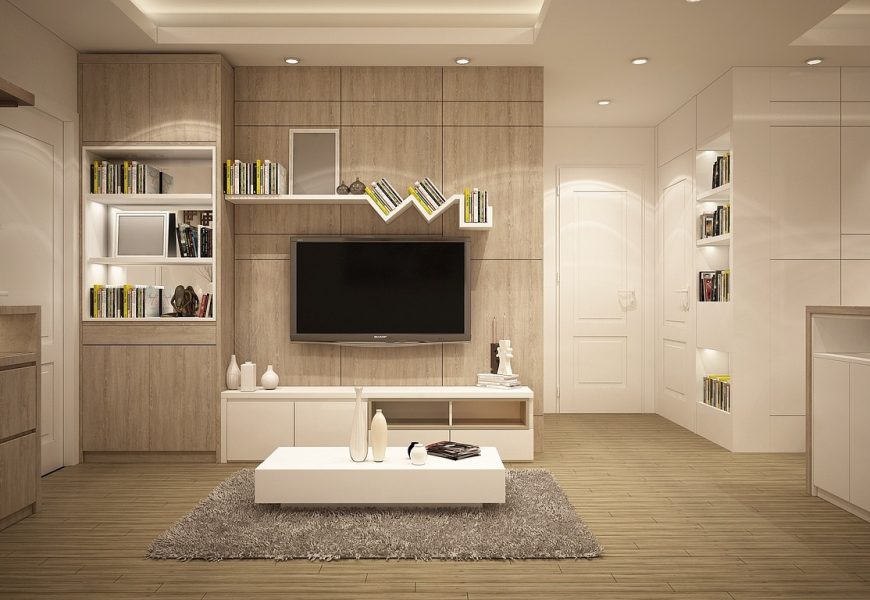Choosing the right video distribution system for your home can elevate your entertainment experience to a whole new level. Whether you’re hosting a movie night in the living room or streaming your favorite series in the bedroom, a Whole house video distribution systems ensures you can enjoy high-quality video in any room of your home. In this guide, we’ll walk you through the key considerations for selecting the perfect video distribution system that meets your needs and budget.
Understanding Video Distribution
video distribution systems allow you to send video signals from a single source, like a DVD player or a streaming device, to multiple displays throughout your home. This means you can watch the same content in different rooms without the need for separate devices in each location. It’s a seamless solution for modern homes with multiple screens.
In today’s interconnected world, the ability to share content across multiple rooms is becoming a standard expectation rather than a luxury. With a video distribution system, you can centralize your media sources, reducing the hassle of managing multiple devices and remotes. By integrating such a system, you not only enhance convenience but also improve the overall aesthetic of your home by minimizing clutter.
Benefits of a Whole House Video Distribution System
- Convenience: With a centralized system, you can control what plays on each screen from a single remote or app. This means no more juggling multiple remotes or dealing with tangled cords. Plus, many systems offer intuitive apps that allow you to manage your media from your smartphone or tablet, putting control at your fingertips.
- Clutter Reduction: Fewer devices mean less clutter in each room. A streamlined setup not only looks better but also makes it easier to clean and organize your space. By reducing the number of required devices, you can focus on creating a more comfortable and inviting environment in each room.
- Cost Efficiency: Instead of buying multiple players or streamers, you can invest in one high-quality source. Over time, this can save you money, as you won’t need to purchase and maintain additional equipment for each room. Additionally, centralizing your media sources can reduce your energy consumption, further cutting down on costs.
- Enhanced Aesthetics: With fewer wires and devices, your home maintains a clean, organized look. By hiding cables and centralizing equipment, you can maintain the design integrity of your living spaces. This not only enhances the visual appeal of your home but also increases its functionality by reducing the risk of tripping hazards or accidental disconnections.
Key Considerations When Choosing a System
Determine Your Needs
First, consider how many rooms you want to connect and what type of content you’ll be distributing. Are you looking to stream high-definition movies, or do you need support for gaming consoles? Make a list of your must-haves to guide your decision.
Think about the specific usage scenarios for each room. For instance, a home theater might require support for high-definition audio and video, while a bedroom setup might only need basic streaming capabilities. Additionally, consider the preferences of different household members, as this can impact the number and type of sources you need to support.
Wired vs. Wireless Systems
Wired Systems
- Pros: Generally offer more stable connections and higher quality video. With a wired system, you can often achieve lower latency, which is critical for high-performance applications like gaming. Additionally, wired connections are less susceptible to interference from other wireless devices, ensuring consistent performance.
- Cons: Installation can be complex and may require professional help. Running cables throughout your home might involve drilling holes and navigating tight spaces, which can be challenging for DIY enthusiasts. Moreover, once installed, wired systems are less flexible if you decide to rearrange your rooms or move to a new home.
Wireless Systems
- Pros: Easier to install and can be more flexible for future changes. Wireless systems allow for quick setup and can be easily modified if you decide to add or remove devices from your network. They are ideal for renters or those who frequently rearrange their living spaces.
- Cons: Can suffer from interference and may not support the highest quality video. The performance of wireless systems can be affected by factors such as signal range, obstacles like walls, and the presence of other wireless networks. This can result in occasional drops in video quality or connectivity issues.
Compatibility with Existing Equipment
Before purchasing a system, check the compatibility with your existing equipment. Ensure that your TVs, speakers, and other devices can connect to the video distribution system without needing additional adapters.
Compatibility issues can lead to increased costs and installation headaches, so it’s crucial to verify that your devices work seamlessly with the new system. Consider creating an inventory of your current equipment and researching which distribution systems are most compatible with it. This proactive approach can prevent future frustrations and ensure a smoother setup process.
Video Quality and Resolution
High-definition content is standard these days, but if you’re interested in 4K or even 8K video, ensure your system supports these resolutions. This will future-proof your setup as video technology continues to advance.
As video quality continues to improve, having a distribution system that can handle the latest resolutions ensures you won’t need to upgrade your equipment as frequently. Additionally, consider the types of content you consume most often, as this can influence your decision on the necessary resolution capabilities. For cinephiles and tech enthusiasts, investing in a system that supports the highest possible quality can significantly enhance the viewing experience.
Control Options
Consider how you want to control your video distribution system. Options include:
- Remote Controls: Traditional but effective. Many systems still offer dedicated remotes that are easy to use and familiar to most users. They often provide quick access to the most commonly used functions without needing to navigate complex menus.
- Smartphone Apps: Offer more features and flexibility. Apps can provide advanced control options, such as setting up viewing schedules, accessing streaming services, and even troubleshooting issues remotely. This can be particularly beneficial for tech-savvy users who prefer more interactive interfaces.
- Voice Control: Integrate with systems like Alexa or Google Assistant for hands-free operation. Voice control offers unparalleled convenience, allowing you to adjust your system without lifting a finger. This is especially useful in situations where your hands are occupied or for users with mobility challenges.
Maintaining Your Video Distribution System
Regular maintenance will keep your video distribution system running smoothly. Here are some tips:
- Software Updates: Keep your devices’ firmware and apps updated to ensure compatibility and security. Regular updates can also provide new features and improve performance, helping you get the most out of your system.
- Cable Management: Regularly check cables for wear and replace them as needed to prevent signal loss. Proper cable management not only ensures optimal performance but also enhances the aesthetic of your setup by reducing clutter and potential hazards.
- Network Health: Ensure your home network is robust enough to handle the data traffic, especially if you’re using AV over IP solutions. Regularly testing your network speed and connectivity can help identify potential issues before they affect your viewing experience. Consider investing in a quality router or network extender to optimize your system’s performance.








